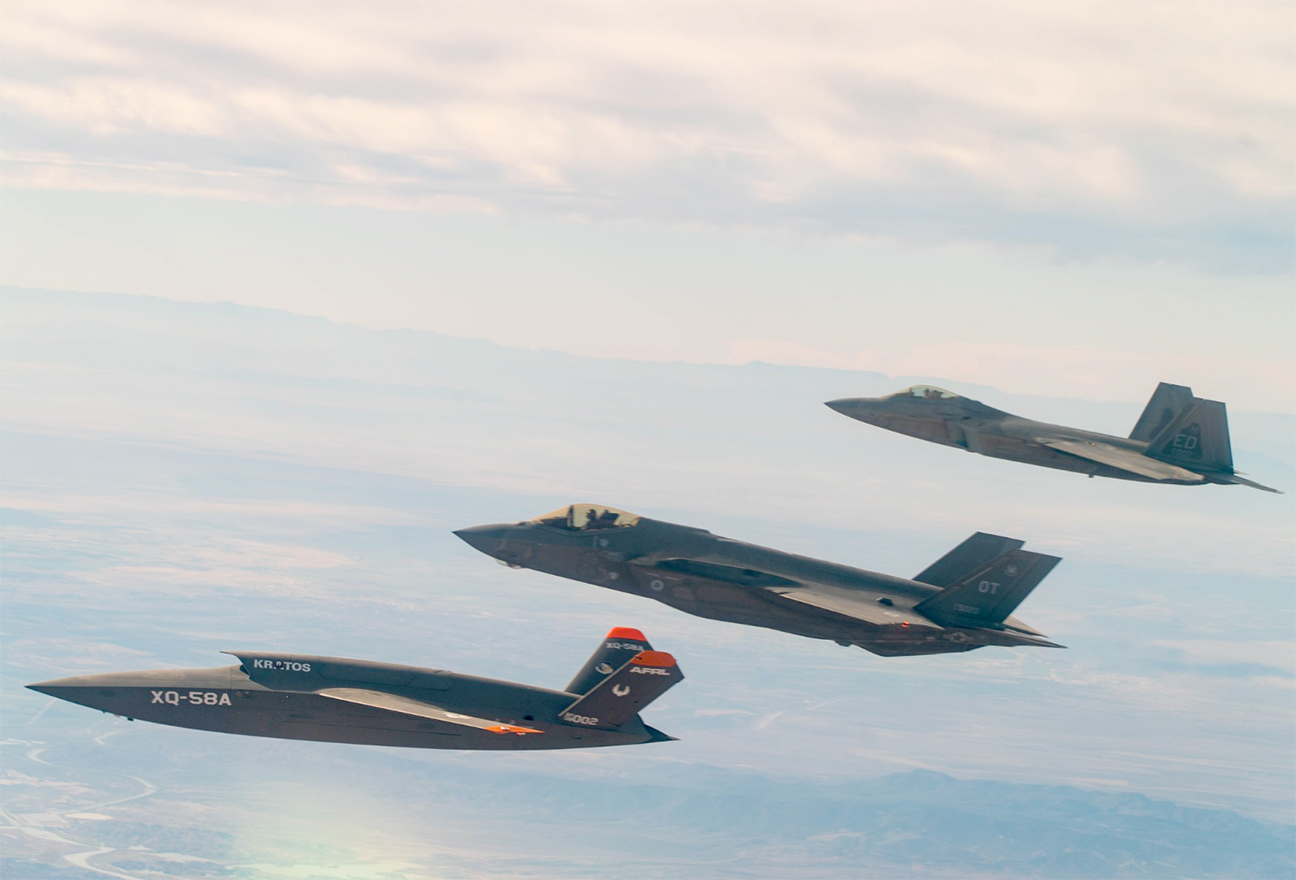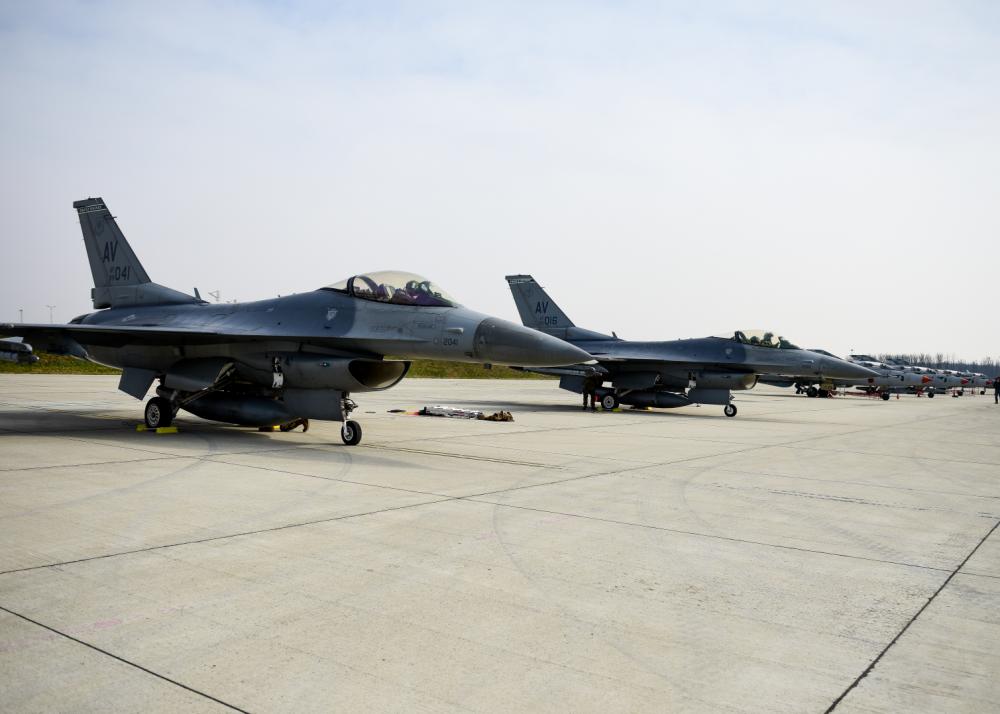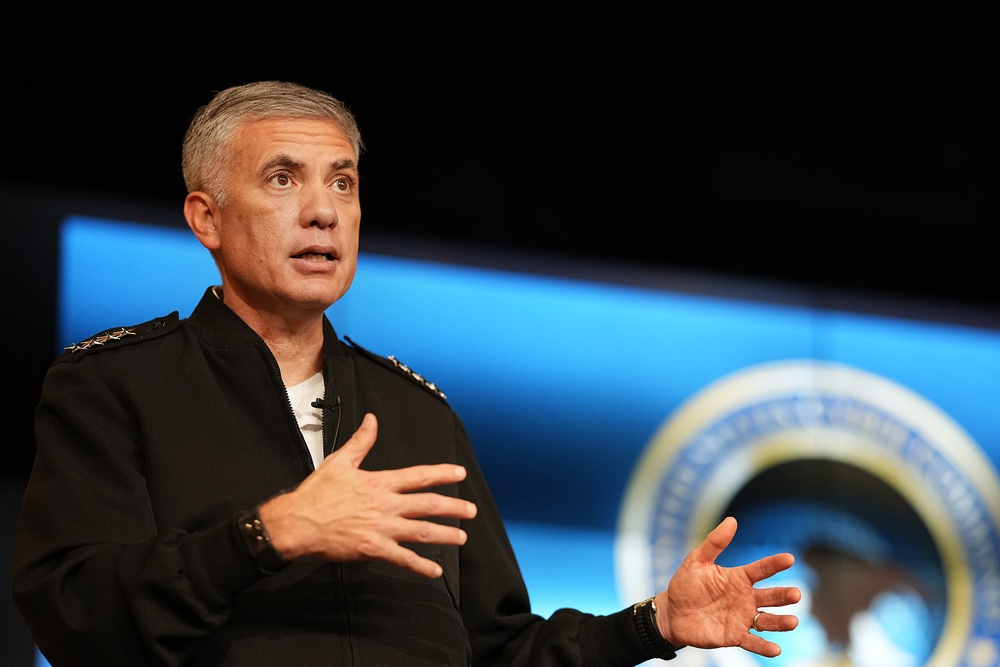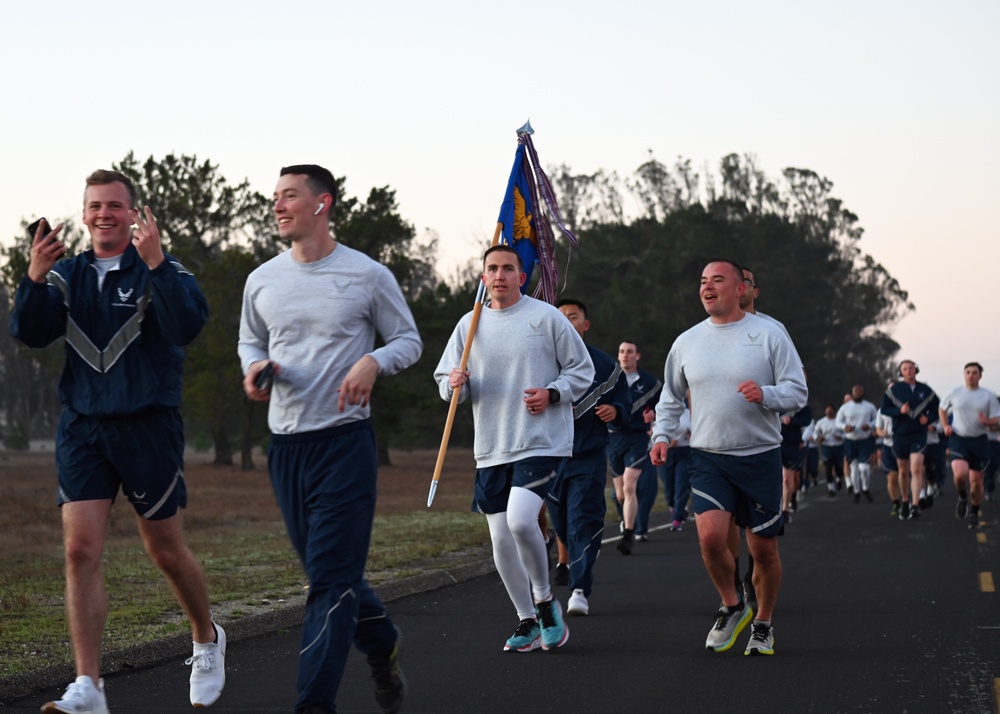Lockheed Martin sees itself well positioned to pursue the Air Force’s new uncrewed aircraft programs to complement both the tactical and strategic bomber fleets, having conducted experiments in manned-unmanned teaming for more than 17 years, company aeronautics executive vice president Greg Ulmer said.
Lockheed Martin’s Advanced Development Programs, or Skunk Works, has been putting “a lot of attention … on manned-unmanned teaming,” or MUM-T, Ulmer said in an early March interview.
“It really is going to be a family of systems,” and Lockheed Martin’s F-35 will likely play a central role, he said.
“We have done a lot of operational analysis in support” of the MUM-T concept with the F-35, he said. The company sees the uncrewed aircraft as “extending the range of an F-35 … beyond the F 35, in front of the F-35 … improving the survivability, enhancing the sensors” of that aircraft.
“Taking that information, and putting it in the fusion engine of an F-35, I think, is very impactful” from an intelligence, surveillance, and reconnaissance perspective for the entire force, he said. “It enables the capabilities of everything around it,” he added.
Ulmer said Skunk Works has done “quite a bit of work from a MUM-T perspective” on both recoverable and attritable aircraft working in concert with the current manned combat aircraft fleet, having done “a lot of demonstrations” since 2005.
The Air Force has branded its fighter force structure through the early 2030s—the F-22 transitioning to the Next Generation Air Dominance (NGAD) aircraft, F-35, F-15EX, F-16, and the A-10—as the “4+1” plan, and Ulmer said he thinks the unmanned systems are “additive” to that mix and constitute a “4+1+1 … if you will,” he said.
“We’re focused on autonomy, artificial intelligence,” he said. The uncrewed aircraft will “have its own capability set,” and the pilot will be able to direct it to go off and conduct a side mission to assist the flight with the overall objective; either reconnoitering an area, or perhaps suppressing air defenses.
The pilot “provides a high level task, and then … the MUM-T vehicle will perform that task and then provide that information.” The F-35 pilot would not be directly controlling the vehicle; it would accomplish the mission on its own, following parameters previously set for it.
“It has the autonomous capability to do the mission set on its own accord,” he said.
Air Force Secretary Frank Kendall said at the AFA Warfare Symposium earlier this month that he expects an F-35 or similar platform would direct as many as five unmanned aircraft flying in concert with it. Kendall couched the new tactical unmanned system as both enhancing the capabilities of manned platforms and expanding the capacity of the force, providing numbers in a battlespace where the Air Force expects it will take losses.
Pacific Air Forces commander Gen. Kenneth S. Wilsbach said March 14 that he thinks USAF’s manned aircraft should be designed as “exquisite” platforms with high capability, while the unmanned systems that accompany them should be designed to be acquired at a cost low enough that their loss would be bearable. Kendall said that for the right mission and target, the escort aircraft might be sent on one-way missions.
Lockheed Martin has discussed a number of stealthy, unmanned aircraft it has flown over the last 20 years, and it built the Air Force’s still largely-secret RQ-170 unmanned reconnaissance drone. Ulmer said this experience will be a discriminator for the company as the Air Force explores this new class of aircraft.
Ulmer noted that Lockheed Martin has done a number of demonstrations “relative to the human interface” on how the pilot would direct a “loyal wingman”-type aircraft and how the information captured would be displayed to the pilot and made available for other aircraft in the formation and in the broader task force to make use of it. Last year, the company linked five F-35s, an F-22, and a U-2 in its “Project Hydra” demonstration, in which the various aircraft obtained and shared tactical information for all to use.
“These are really kind of stepping stones, where we work the elements as we approach MUM-T,” he said.
Lockheed Martin divisions such as Sikorsky Rotary systems—which recently flew an unmanned Blackhawk helicopter—as well as Missiles and Fire Control, Aeronautics, and Space—have been pooling their expertise to develop aircraft autonomy and the sharing capabilities needed to make MUM-T work, Ulmer said.
Although the Air Force has said it plans to phase out the F-22 starting in 2030, Ulmer said he expects the F-22 to serve beyond that point.
“I know the time horizon associated with an NGAD,” he said, but the timing of its arrival isn’t firm yet, and the F-22 will be needed until the NGAD is available.
“It’s understood … that the F-22 is in that equation” of the 4+1, he said. “It remains to be seen what the time horizon will be for NGAD. So the F-22 is going to be in play for the foreseeable future. And to me, that’s a decade-plus.”
Ulmer said he has not been told the F-22’s primary mission will change as the NGAD comes online, from air superiority to, perhaps, stealthy ground attack.
“To my understanding, for the foreseeable future, it is still the air superiority platform,” he said.































